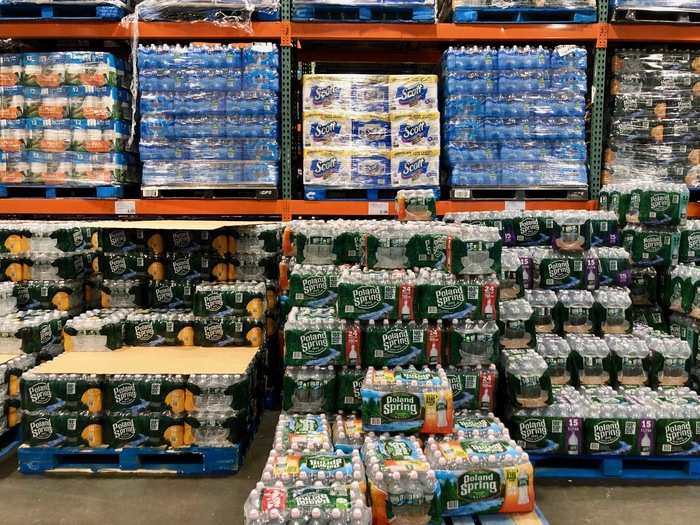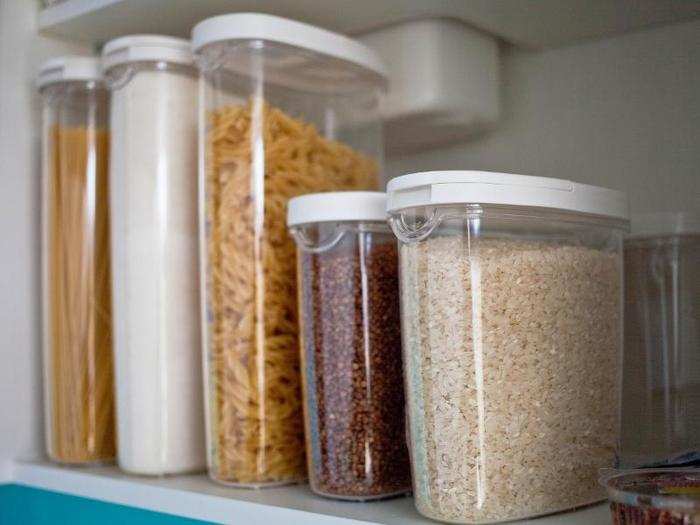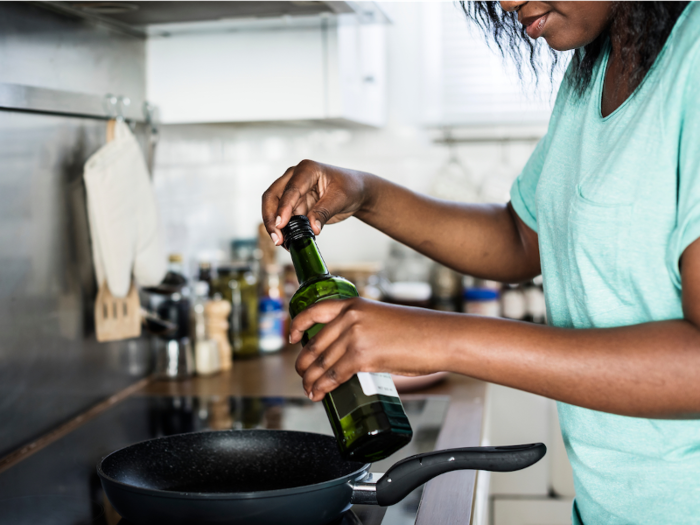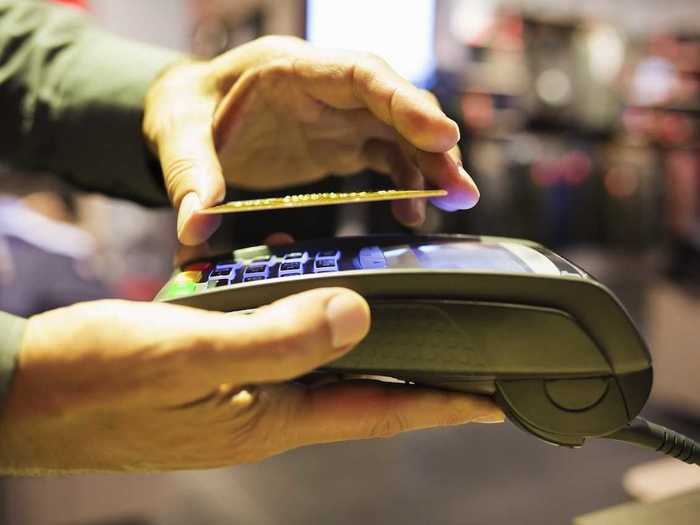- Home
- slideshows
- miscellaneous
- Here's the exact 7-step system I used to cut my grocery bill in half and save money on food
Here's the exact 7-step system I used to cut my grocery bill in half and save money on food
1. Stockpile

2. Buy staples in bulk

Buying meat, poultry, and staple items in bulk often translates into substantial savings. You'll find that bulk items often accompany lower unit prices. Test it out for yourself next time you're shopping: Calculate the unit price of a family pack of steaks versus a single steak. Chances are you'll find that the family pack is the better deal.
While this holds true most of the time, it's not always the case, so make sure you're calculating the unit price.
My favorite items to buy in bulk are meat, poultry, rice, and pasta. These staples help me whip up a simple meal with minimal ingredients at the drop of a hat. I can throw in a roast in the crockpot and make a side of pasta and dinner is ready.
3. Find or create extra storage at home

Having a chest or standalone freezer is great for storing bulk meat, cheese, or even bread. It can help you stretch the gap between shopping trips, and fewer shopping trips usually means less money spent overall.
I converted a small coat closet in my hallway to act as a butler's pantry of sorts. Using four MDF boards cut down to size by the home improvement store staff and a couple of supporting materials, I made my own stockpile closet!
It has organized my stockpile and I didn't clutter my space.
4. Meal plan

Planning out your meals based on your current food stock and what's on sale that week is optimal, and can lead to massive savings.
With this method of meal planning, you're able to use what you currently have, which means you're not spending additional money on new items. The added benefit is that you're able to utilize your stockpile, making your meal plans cost less per serving. It also gives you a way to make more creative meals by swapping recipe ingredients with items you already have in stock.
Meal planning in combination with shelf cooking (using what you have in you have on hand) can add up to notable savings in your food budget.
Every Sunday, I sit with my family and get their input on the meals they'd like to eat for the week. Usually each person picks a meal or two and I can easily compile seven meals that will be on our menu. This way, everyone looks forward to dinner and I don't have to rack my brain trying to come up with a meal plan for everyone.
Then, once the meal plan is set, I shop my stock and start making my shopping list for the minimal ingredients we might need.
Our dinners are pretty simple, using almost the same staple ingredients. We just switch up the flavors. For example, chicken and pasta might be chicken alfredo for one meal and chicken chow mein for another.
5. Repurpose leftovers

Re-using leftovers eliminates food waste and saves you from making another meal.
Once a week, we "clean out" the fridge and reheat and repurpose our leftovers from the week. It looks like a buffet or potluck-style dinner, but the food is eaten and enjoyed by the entire family while more money stays in our pockets.
One smorgasboard dinner down, zero dollars spent.
Accounting for one leftover day means one less meal you have to shop for. That equates to four extra meals per month at no extra cost to you.
6. Use the right credit card

When we think of saving money on food, we often think of ways to get unbeatable prices, but we forget that there is another way to save money in this category: credit card rewards.
Credit card rewards bump up your savings potential, since you can earn cash back on grocery purchases.
I currently use the Costco Anywhere Visa by Citi credit card, so I earn 1% cash back on grocery purchases and 2% cash back on Costco purchases.
And I use this card to shop at Costco, Food 4 Less (Kroger in some states), and a local international market. It's great that I earn cash back rewards no matter where I choose to spend my grocery money, since it's based on categories.
Related: The 5 best credit cards for earning rewards on your grocery spending
7. Explore cash-back apps

Here's one I've just started using: cash-back apps.
Ibotta, for instance, is an app that offers cash back on purchased items. You just add the offers that you want to use, upload your receipt after your grocery trip, and cash back is calculated. You can even use it for your online shopping for even more savings potential. Some people use the app instead of clipping coupons.
I'm starting to use this app more now and so far, I've accumulated a few dollars of cash back. Now that I'm not clipping coupons as often, I'll be using this method much more and I look forward to saving more with this strategy while also saving time.
- Read more:
- I ordered my fruits and vegetables from Imperfect Produce for 6 months and loved it — here's how the 'ugly produce' service works
- I haven't gone to a grocery store in months or a drugstore in years — I use Instacart and Amazon Subscribe & Save instead
- We order all of our groceries online, and it saves us more than $750 a month in time and money
- When I stopped buying plastic to go green, I ended up slicing my grocery bill in half
Popular Right Now
Popular Keywords
Advertisement